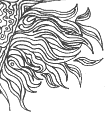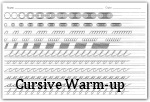Drawing Class
I am going to write a little about one of Holly's high school art classes that I put together for her. I intended to write about it as we went through the class, but I was too busy. I managed to write two blog posts about it and I will republish those here. I can't go into great detail or publish all sorts of examples because of limited time.
 The list below is part of the syllabus that I wrote for her class. In parentheses you will see either an artist whose work was used as an example of the topic or, in parathesis, you will find further detail about the topic.
The list below is part of the syllabus that I wrote for her class. In parentheses you will see either an artist whose work was used as an example of the topic or, in parathesis, you will find further detail about the topic.
When, or if, I get assignment sheets ready to share, I will link them next to the topics. The assignment sheets might have checklist boxes for more weeks than specified in the syllabus. The extra days are there because one might need longer to study the topic.
Line
Week 1 Line (controlled hand)  Assignment Sheet
Assignment Sheet
Week 2 Blind Contour Drawing (Matisse, Picasso)  Assignment Sheet
Assignment Sheet
Week 3 Gesture Drawing
Weeks 4 - 5 Cross-Contour Line (H Moore)
Weeks 6 Texture (study of tonal value)
Weeks 7 -8 Assessment assignment (small rotten branch)
Composition
Weeks 9 and 10 Sighting and Using a Viewfinder (Vermeer)
Weeks 11 - 13 Value in composition (Value balance in composition) (Rembrandt)
Weeks 14 - 16 Ink and washes (further study of tonal value)
Weeks 17 - 18 Subtractive drawing
Weeks 19 - 20 One-point and Two-point Perspective (review)
Week 21 Transparent Construction (applications of perspective)
Weeks 22 - 23 Assessment assignment (landscape)
Drawing the Human Form
Weeks 24 - 25 Skeletal structure (drawing parts of skeleton)
Weeks 26 - 27 Study of full skeleton (study of proportions, drawing full skeleton using skeleton model)
Week 28 Bony landmarks of skeleton, effects on fleshed figure
Week 29 Muscle structure
Weeks 30 - 32 Foreshortening and proportions
Weeks 33 - 36 Assessment: Practice drawing human form from model
 Related
Related
Books Used
The Elements of Drawing: in three letters to beginners. by John Ruskin
I used a few exercises from Ruskin's book. He is thorough in his explainations, which means there is a lot to read, but it's worth it. He instructs the student in how to draw and, although he doesn't call it this, in the proper attitudes or qualites in the method of learning while working. Patience, Thought, Careful Observation
The Art of Teaching Art by D. Rockman.
I've used Rockman's book for several of our art classes. For me, it is a valuable reference for drawing and perspective. She also writes about the administrative end of teaching art - planning the syllabus, evaluating work.. etc.



 Three cursive handwriting warm-up printable files, each one has two sections. They are not meant to "go with" any particular cursive style, they are just warm-ups. The warm-ups are also linked at Cursive and Cursive Z.
Three cursive handwriting warm-up printable files, each one has two sections. They are not meant to "go with" any particular cursive style, they are just warm-ups. The warm-ups are also linked at Cursive and Cursive Z.


